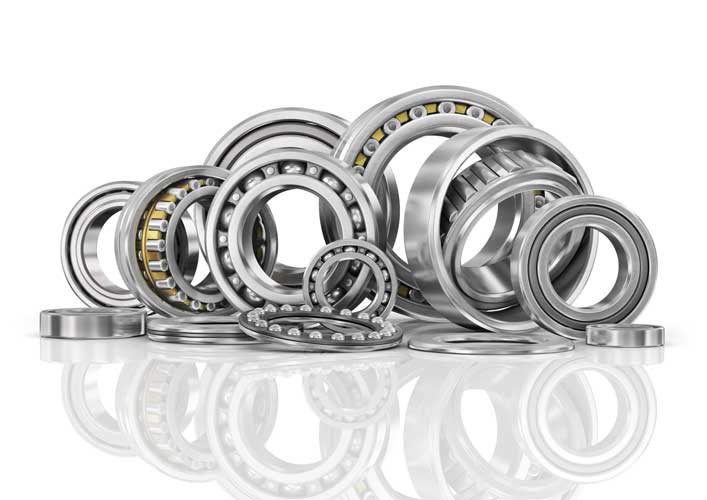
85+ Years of Service and Dedication
Family Owned. Family Operated. USA Made.
Quick Guide to Industrial Bearing Types: Roller Bearings vs. Ball Bearings
Industrial bearings come in many unique designs and configurations in order to deliver optimal performance in many different load-bearing applications.
Typically used within industrial machinery and supporting equipment, various high-performance bearing types are designed to contend with extremely different operational conditions. For example, you might be dealing with any combination of high shaft speeds, high loads, heavy shock and impact, or specialized sealing requirements, to name a few.
Comparing the Common Industrial Bearing Types
Two of the most common bearing types we see throughout the industry today are conventional ball bearing assemblies and roller bearings (including cylindrical rollers and needle bearings). Of course, ball bearings vs. roller bearings each come with their own specific performance benefits, and are each better suited for different equipment applications.
Generally, ball bearings are optimized for higher speeds and lighter loads than roller bearing types. Roller bearings, on the other hand, perform better when subjected to radial impact loading and harsh shock. Below, we delve further into what sets these two industrial bearing types apart.
Industrial Ball Bearings: Design and Advantages
Ball bearings typically exhibit lower friction versus roller bearings. For many applications, that reduced friction results in smoother operation and less energy consumption due to frictional drag. Ball bearing types are therefore well-suited for many high-speed industrial applications, such as rotational machine tools and electric motors.
The Basic Benefits of Industrial Ball Bearings
- Low Coefficient of Drag – Promotes lower wear, generally less required maintenance, and a longer service life in addition to better machine efficiency.
- Relatively Simple in Design – Adds to the reliability of the various bearing components and facilitates a lower overall cost.
- More Freedom of Movement – Compared to roller bearings, ball bearing designs are overall more versatile, allowing for unhindered motion in all axes.
- Better for Axial Loads – The freedom of movement that ball bearings provide typically make them the better choice for accommodating high axial loads.
Industrial Roller Bearings: Design and Advantages
Cylindrical roller bearings are a type of rolling-element bearing commonly used in various industrial applications to provide support for rotating shafts or axles while minimizing friction and facilitating smooth motion.
As the name suggests, roller bearings consist of cylindrical rollers installed with or without a cage. The cylindrical design distributes loads and impact force lengthwise, which reduces frictional force in the radial direction. The roller design also allows for a small amount of internal clearance to compensate for slight misalignments or mismatches in tolerances.
The Basic Benefits of Cylindrical Roller Bearings:
Engineered for High-Performance Reliability – The cylindrical bearing design distributes loads and resists damage, fatigue, and shock better than standard ball bearings.
More Forgiving of Mismatched Tolerances – Cylindrical roller bearings can tolerate small mismatches in tolerances or tiny amounts of misalignment better than conventional ball bearings, which would otherwise quickly wear out due to the increased shock and friction.
If you need more assistance choosing the ideal industrial bearing type for your unique application, get in touch with the bearing experts at BSC!
Quality American Manufacturing for Industrial Bearing Products Since 1933
BSC is one of America’s premier manufacturers and repair sources for industrial ball bearing assemblies and roller bearings. Since 1933 our company has delivered superior manufacturing services and product support for the industry’s critical bearing components.

